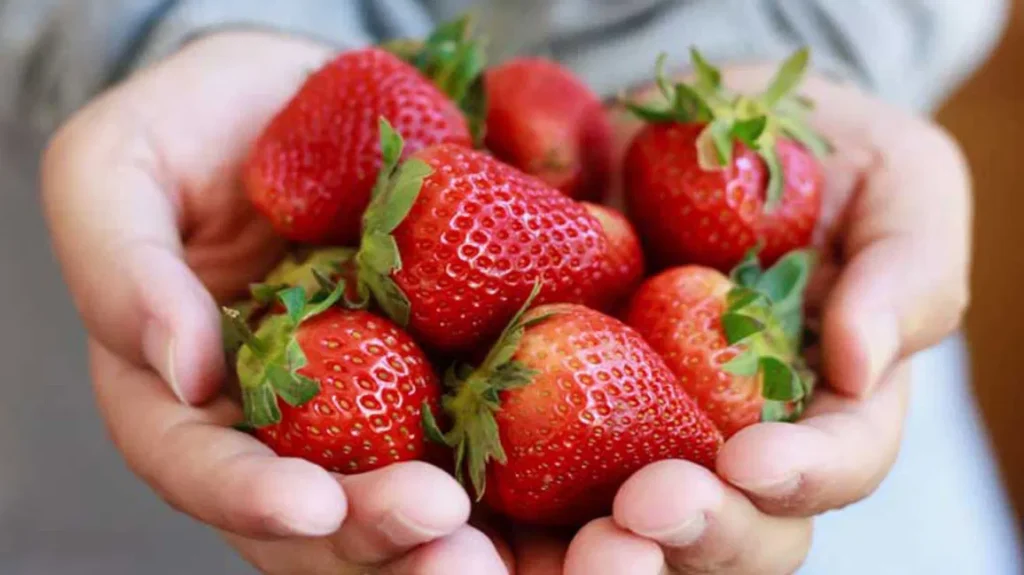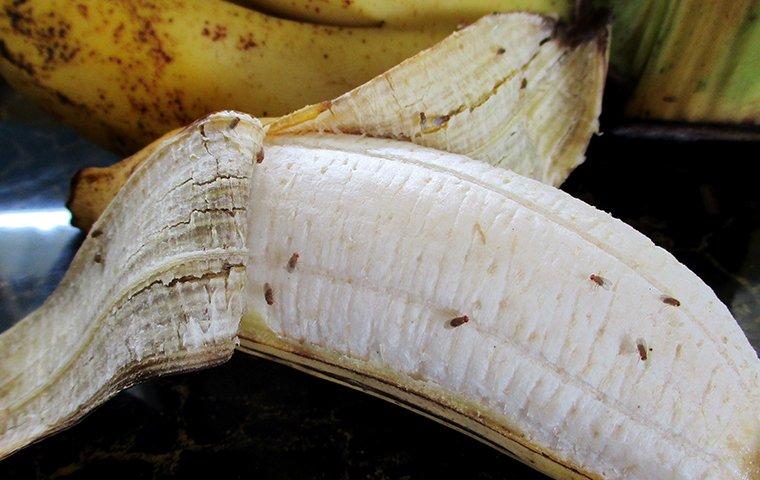Fruits are not only tasty but also packed with nutrients that are important for our health. There are lots of different kinds of fruits, all with their own unique shapes, sizes, and tastes. We often enjoy fruits in our everyday meals, but did you know there’s a whole area of study just for fruits? It’s a special part of horticulture called pomology.
This blog post will take you on a deep dive into pomology. We’ll look into what pomology involves and why it’s such an interesting field.
Table of Contents
- Understanding Pomology
- The Story of Pomology
- Different Areas of Pomology
- 1. Fruit Morphology
- 2. Fruit Physiology
- 3. Fruit Breeding
- 4. Fruit Pathology
- 5. Postharvest Management
- Growing and Making Fruit
- 1. The Best Weather and Soil for Fruit
- 2. How to Plant and Make More Fruit Plants
- 3. Fighting Bugs and Sickness
- 4. Picking Fruit and Taking Care of It After
- Pomology Research and Innovations
- 1. Using Science and Technology
- 2. Farming with High-Tech Help
- 4. Creating New Kinds of Fruit
- 5. Fresh Ideas After Picking
- Why Pomology Is Important for Money
- 1. Trading Fruit Everywhere
- 2. Jobs from Pomology
- 3. Pomology and Having Enough Food
- Finishing Thoughts
Understanding Pomology
Pomology is the part of science that focuses on everything about fruits. It covers how to grow them, how to take care of them after they’re picked, and even how to make sure they’re of the best quality. People who work in this field are like fruit detectives—they look at the way fruits are made up, how they grow, and how they can be made even better.
To put it simply, pomologists have the important job of making sure that the fruits we eat are tasty, full of nutrients, and available in lots of different types.
The Story of Pomology
Now imagine yourself in a place full of fruit trees with fruit ready to be picked. The air smells sweet, and you can hear bees buzzing around. It’s amazing to think that people started to grow fruit trees on purpose a long time ago.
The study of fruits, pomology, goes back to ancient civilizations like the Babylonians and Egyptians. These early fruit growers planted lots of trees and even designed ways to water them so they would always have fruit. Later on, this knowledge spread around places like Greece and Rome, where they got even better at growing fruits.
In medieval times, monks carried on the tradition of growing fruit, and they came up with new kinds to enjoy. The Renaissance was an exciting time because people started to get really interested in learning and discovering, and this included learning more about fruits. The Enlightenment brought even more knowledge, and people started to understand the science of fruits better, coming up with new methods for breeding fruit trees.
In the 1800s, pomology grew up to be a science all on its own, with people dedicating their work to studying fruits, and new journals and institutes popping up for research.
Nowadays, pomology is still super important. Scientist are always finding new ways to make sure we have lots of good fruit to eat. They’re using new technology to learn about genetics and find ways to grow fruit that’s better for the planet.
Different Areas of Pomology
Pomology includes many different areas, each focusing on a certain part of fruit science.
Here are the main areas:
1. Fruit Morphology
Fruit morphology is all about what fruits look like—their size, shape, color, skin, flesh, seeds, and core. Scientists look at how fruits are built to understand them better and come up with new kinds.
2. Fruit Physiology
In fruit physiology, scientists study what happens inside fruits as they grow. They want to know everything about how fruits change, especially as they ripen. By knowing how things like weather and water affect fruit quality, they work to make fruits even better and make sure they grow well.
3. Fruit Breeding
Fruit breeding is about making new kinds of fruit by mixing different types together. Pomologists use this method to create fruits that taste better, last longer, and can protect themselves from diseases. They also use biotechnology, which is science using living things to make products, to invent new fruit varieties.
4. Fruit Pathology
Fruit pathology is the study of diseases that can hurt fruit crops. Scientists figure out what causes these diseases and how they spread. They want to find ways to keep fruit plants healthy and stop diseases before they can cause any harm.
5. Postharvest Management
Once fruits are picked, they still need to be taken care of. This is called postharvest management. Scientists study how to keep fruits fresh while they’re being stored or sent to stores. They also look at different ways to keep fruits for longer—like freezing or making them into jams—so we can enjoy them all year round.
Growing and Making Fruit
Growing fruit and making sure it’s ready to eat is a big part of pomology. Farmers need to know a lot about the best weather and soil for each fruit, how to plant and care for them, how to protect them from bugs and sickness, and how to pick and store the fruits correctly.
1. The Best Weather and Soil for Fruit
Every type of fruit needs just the right environment to grow. Some fruits need warm, sunny places, while others like it cooler. The soil has to be just right too—it should have the nutrients the plants need. Getting these conditions right means the fruits will grow well and taste great.
Fruit crops grow best in different climates and soils.
Specialists called pomologists study the kind of weather, rain, and sunlight that different fruits need to grow. They find the best places to grow these fruits.
They look at the soil too – is it the right kind, does it have enough food for the plants, is it too sour or too sweet? This helps them figure out where different fruits can grow well.
2. How to Plant and Make More Fruit Plants
Knowing the right way to plant and make more fruit plants is important for good fruit.
Pomologists try different ways to start new plants – from seeds, joining a branch from one plant to another, or making a small cut and putting a bud in it. They check the best time to plant, how far apart to plant them, and which way they should face to grow lots of fruit. p>
3. Fighting Bugs and Sickness
Bugs and plant sickness can ruin fruit.
So, pomologists study the kinds of bugs and sickness that can hurt fruit plants. They come up with plans to keep the plants safe. They might use helpful bugs, change the way they grow plants, or sometimes use chemicals to stop the bugs and sickness.
4. Picking Fruit and Taking Care of It After
Picking fruit and taking care of it after is super important.
Pomologists find out the best time to pick each kind of fruit, how to do it, and how to handle them so they don’t get hurt. After the fruit is picked, they look at how to keep them clean, pick out the bad ones, and store them right. They make plans to keep the fruit fresh for as long as possible, like keeping them cold or in special air or packaging.
Pomology Research and Innovations
Pomologists are always trying to make growing fruit better, tastier, and more earth-friendly.
1. Using Science and Technology
Big changes are coming from using science to grow fruit. Pomologists use this science to make new kinds of fruit that don’t get sick easily, can handle dry weather, and give more fruit.
They also find ways to farm that are good for our planet, like using natural things to protect plants and packing that breaks down in the earth.
2. Farming with High-Tech Help
There’s a new way of farming that uses technology to check on the soil and plants. Pomologists use tools like flying drones and special sensors to collect information about the land and crops. This high-tech help lets farmers know when to water, feed, and protect their plants.
Earth-friendly farming is a big deal in pomology. People want food that’s grown in a way that’s kind to the earth.
Pomologists come up with new ways to farm that help the planet, using natural stuff to feed the plants, planting other crops to protect the soil, and fighting off pests without too many chemicals. They also try to use less water and energy, and make less air pollution.
4. Creating New Kinds of Fruit
Pomologists make exciting new fruits that taste great, are good for you, and look nice.
By mixing different fruits, they can make new ones with special colors, shapes, and flavors. They use new science to make these fruits stronger against bugs and sickness, and even boost their vitamins and minerals.
5. Fresh Ideas After Picking
New ideas help keep fruits fresh longer and cut down on waste. Pomologists invent new kinds of packaging that can keep fruit fresh, like making a wrapper you can eat or coverings that help them stay fresh.
They also work on keeping and moving fruit in ways that keep them good to eat, like storage that controls the air or using special packing. These ideas mean people can have yummy fruits all year, even if they live where it’s not always warm enough to grow them.
Why Pomology Is Important for Money
Pomology is really important for making and selling fruits all around the world. It’s about feeding people, making jobs, and making money.
1. Trading Fruit Everywhere
A lot of money is made by selling fruits to different countries. It’s a huge business!
Pomologists understand what fruits people want to buy, how to get fruits to places, and the rules for selling fruits between countries. They help farmers make more money with their fruits.
2. Jobs from Pomology
Pomology gives lots of types of jobs to people. They can work on farms, do research, or teach others.
Pomologists are all over the place – in governments, schools, places where they figure out new things, and businesses that sell fruit. They help make fruits better and safer for people to eat.
3. Pomology and Having Enough Food
Pomology helps make sure people have enough food by growing lots of fruits that are good to eat and help make money.
They find the best way to grow fruits and keep plants healthy to make sure there’s enough for everyone. They also study which fruits are the healthiest so that people understand how good fruits are for them.
Finishing Thoughts
Pomology is all about studying fruits and how to grow them. There’s a lot to learn, like the science of fruits, different ways to grow them, and how they help our money and health.
Pomologists have all kinds of jobs, from work in the government to big companies, and it’s their work that gives us delicious and healthy fruits. Pomology is a key piece in making sure we can all have enough food that’s good for our bodies and the planet.
So, learning about pomology helps us get to know more about fruits and how we can grow them in the best way possible.









